Mini Transat: Pecking order, for now
Published on November 9th, 2017
(November 9, 2017; Day 8) – The rankings for the Mini-Transat La Boulangère are looking increasingly similar with every passing day. Even the more or less radical options are failing to shake up the hierarchy of the skippers’ respective positions. However, the situation may well evolve more in a few days with a changing forecast.
For now, the skippers are continuing to tick off the miles, day in day out. Indeed, each day of a Mini sailor’s life is relatively active, amidst fitful sleeping, manoeuvres, navigation and maintenance of the boat.
The typical day begins at daybreak, the perfect time to get back to reality, especially given how testing it is to be on watch late into the night and through into the early hours. As such it’s best to get a few minutes shut-eye whenever conditions allow.
The taste of a breakfast, brief as it may be, alone on the ocean as the sun peeps over the horizon in the east, is simply beyond compare. It’s time for the day’s first VHF audio session with the support boats, when they are in range that is.
Next up, it’s over to fine-tuning the trim and even putting in some time at the helm, just to get an idea about whether it’s the skipper or the autopilot that performs best. We mustn’t forget a spot of stacking too, as the wind is never totally stable in terms of strength or direction.
Then it’s the hallowed time of the weather report issued by Race Management. This involves pinpointing the centres of any active pressure and noting the wind forecasts before switching over to the rankings. Each competitor is allowed to view the distance in relation to the goal for themselves and everyone else.
What begins then is the daily conundrum: trying, in light of the weather forecasts and daily progress of any direct rivals, to position them all on the race zone. The craziest assumptions may well be contradicted at the finish when the time comes to look at the cartography archives around a rum punch.
There are always a thousand and one things to do on a Mini of course. Checking your gear and looking for any signs of wear or chafing on the sails, doing a spot of sewing or a bit of whipping to effect repairs or make sure things last, casting an eye over the helming system and the rig.
Meantime, certain sailors treat themselves to a musical interlude, immerse themselves in a book or film their adventure. These asides are obviously a lot less evident aboard the leading boats, given that daggers tend to be drawn in the battle for the top spot!
In the current season, it’s not uncommon for fronts to upset the usual wind patterns. In this way, an easterly wave of breeze on November 12 is likely to stir things up considerably amidst the trade winds and this may well extend as far as 19°N.
As such, the whole fleet is likely to have to contend with weak winds, the direction of which will be more or less random. For the favourites, this means that it may well be game on once more in the hunt for the crown.
Ian Lipinski (Griffon.fr) now boasts a sufficient lead not to be overly alarmed by these shenanigans. However, in the production boat category, the situation could well be turned on its head and Erwan Draoulec (Emile Henry) and Clarisse Crémer (TBS) could see their rivals biting at their heels once more. After adopting a radical southerly option, the likes of Tanguy Bouroullec (Kerhis Cerfrance) may well be among them.
Others don’t have to deal with such problems. Patrick Jaffré (Projet Pioneer), like Antoine Cornic (Destination île de Ré), can no longer get the best of their boat’s potential. The former is having to take time out to repair his rudders and Antoine is suffering from limited power aboard, which is forcing him to reduce his sail area in order to get some sleep.
The only consolation for them will be knowing that they are not alone in their misfortune. Indeed, after dismasting yesterday, Romain Bolzinger (Spicee.com) stands little chance of exceeding an average speed of four and a half knots with his jury rig as he continues determinedly to make for Martinique. At the current pace this will likely take around thirteen days at sea.
Position report on 9 November at 15:00 UTC
Prototypes
1 Ian Lipinski (Griffon.fr) 1,022.3 miles from the finish
2 Simon Koster (Eight Cube Sersa) 122.3 miles behind the leader
3 Jorg Riechers (Lilienthal) 145.6 miles behind the leader
4 Andrea Fornaro (Sideral) 205.3 miles behind the leader
5 Kéni Piperol (Région Guadeloupe) 228.9 miles behind the leader
Production boats
1 Erwan Le Draoulec (Emile Henry) 1,245.4 miles from the finish
2 Clarisse Crémer (TBS) 40.2 miles behind the leader
3 Tom Dolan (offshoresailing.fr) 81.0 miles behind the leader
4 Benoît Sineau (Cachaça 2) 84.1 miles behind the leader
5 Tanguy Bouroullec (Kerhis – Cerfrance) 94.4 miles behind the leader
Class news – Race news – Tracking – Facebook
Race Facts
· 21st edition
· 4,050 miles to cover between La Rochelle – Las Palmas in Gran Canaria and Le Marin (Martinique)
· 81 skippers at the start
· 10 women
· 11 nationalities
· 20 years: age of the youngest skipper in the race: Erwan Le Draoulec
· 62 years: age of the oldest skipper in the race: Fred Guérin
· 25 prototypes
· 56 production boats
· 66 rookies
· 15 ‘repeat offenders’
Background
With an overall length of 6.50m and a sail area pushed to the extreme at times, the Mini Class offers incredibly seaworthy boats. Subjected to rather draconian righting tests and equipped with reserve buoyancy making them unsinkable, the boats are capable of posting amazing performances in downwind conditions… most often to the detriment of comfort, which is rudimentary to say the least.
The Mini Transat has two legs to carry the fleet from La Rochelle, France to Martinique, West Indies. The leg from La Rochelle to Las Palmas de Gran Canaria is a perfect introduction to proceedings before taking the big transatlantic leap.
The first leg starts on October 1, with the fleet thrust into the Bay of Biscay which can be tricky to negotiate in autumn, while the dreaded rounding of Cape Finisterre on the north-west tip of Spain marks a kind of prequel to the descent along the coast of Portugal. Statistically, this section involves downwind conditions, often coloured by strong winds and heavy seas. Making landfall in the Canaries requires finesse and highly developed strategic know-how.
The second leg begins on November 1, with the solo sailors most often carried along by the trade wind in what tends to be a little over two weeks at sea on average. Due to a storm, the fleet is being routed south to Cape Verde before heading west. At this point, there’s no way out: en route to the West Indies, there are no ports of call. The sailors have to rely entirely upon themselves to make Martinique.
Source: Aurélie BARGAT | Effets Mer


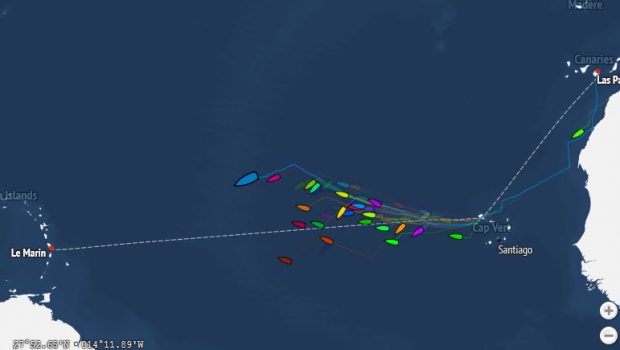

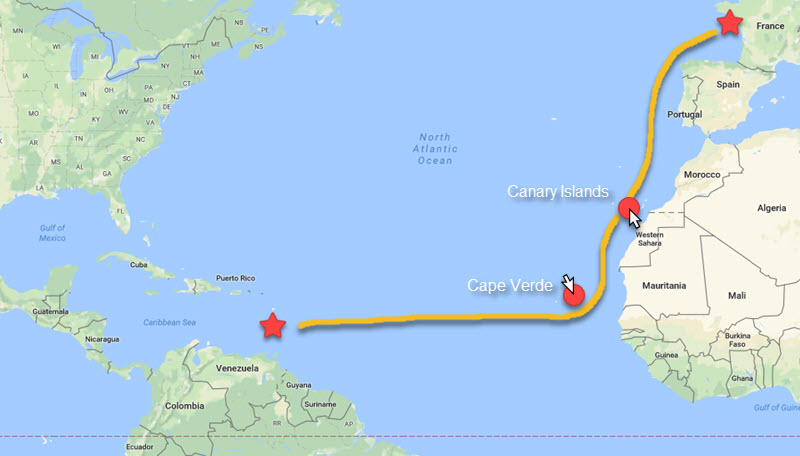


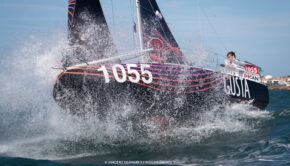
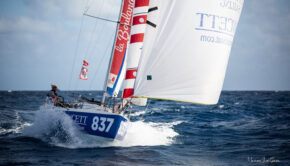
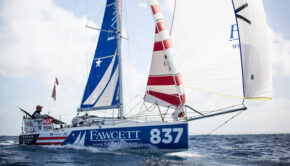
 We’ll keep your information safe.
We’ll keep your information safe.